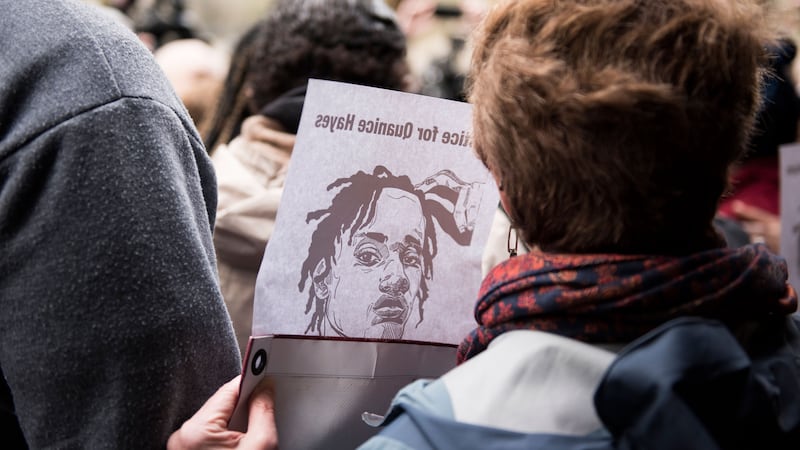A series of unfortunate decisions led Quanice Hayes, an unarmed 17-year-old, to a fatal encounter with Portland Police in February 2017.
The deadly shooting has since inspired protest and criticism of police, even as the officers involved have been cleared of wrongdoing.
The details of Hayes' final night in Portland, recounted in a Longreads story written by longtime WW contributor Leah Sottile, raise questions about an officer's use of deadly force that night, and lay out a tragic sequence of poor choices that ended with an officer shooting the unarmed boy three times.
When Portland police shot and killed Hayes, he was on his knees, crawling out of an alcove between a house and a garage where he'd been hiding. Officers searching for Hayes thought that he had a weapon based on witness reports that Hayes robbed a man at gunpoint earlier that night.
Unbeknownst to police, Hayes only had a toy gun, which had been discarded and lay feet from Hayes before he started crawling out of his hiding space. Sottile reports that officers testified they did not see the mock weapon before one of them fired on Hayes as he struggled to crawl toward police with his hands in the air.
When Hayes suddenly reached for his waistband, according to grand jury testimony, Officer Andrew Hearst fired three rounds, shooting Hayes twice in the chest and once in the head, killing him.
Hearst was cleared of wrongdoing by a grand jury that declined to indict him – but activists and legal experts have questioned that decision.
"The reach for the waistband is a very good reason for officers to elevate their awareness of the potential threat—but at that point it's still just a potential threat," Seth W. Stoughton, a former police officer and assistant law professor at the University of South Carolina, told Sottile. "It isn't an actual threat until officers have some sort of confirmation there's a weapon there."
